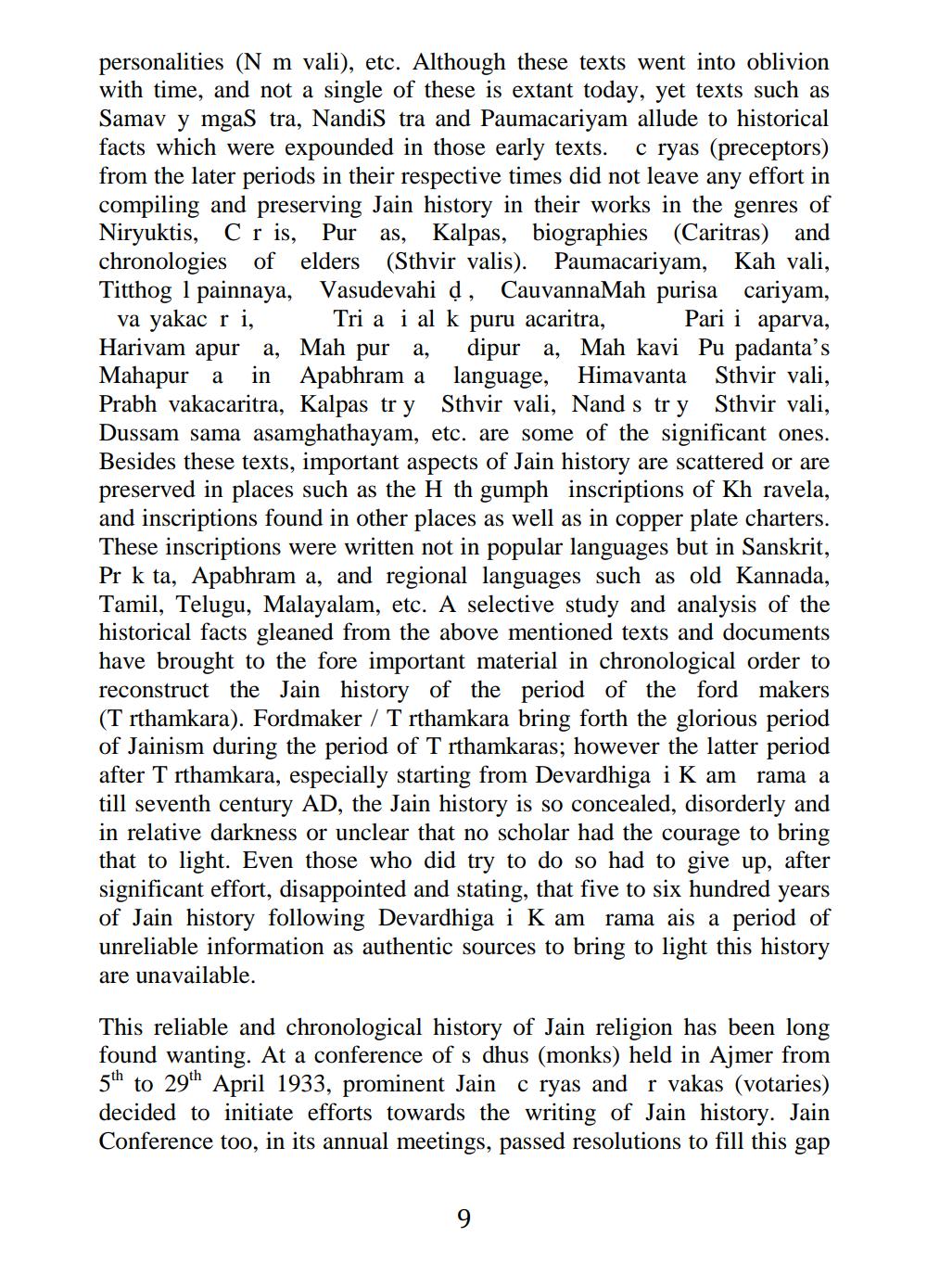Book Title: Jain Legend Vol 1 Author(s): Hastimal Maharaj, Shuganchand Jain, P S Surana Publisher: Hastimal Maharaj Shugan C Jain P S Surana View full book textPage 9
________________ personalities (N m vali), etc. Although these texts went into oblivion with time, and not a single of these is extant today, yet texts such as Samav y mgaS tra, NandiS tra and Paumacariyam allude to historical facts which were expounded in those early texts. c ryas (preceptors) from the later periods in their respective times did not leave any effort in compiling and preserving Jain history in their works in the genres of Niryuktis, Cr is, Puras, Kalpas, biographies (Caritras) and chronologies of elders (Sthvir valis). Paumacariyam, Kah vali, Titthog 1 painnaya, Vasudevahi d, Cauvannamah purisa cariyam, va yakac ri, Tri a i al k puru acaritra, Pari i aparva, Harivam apura, Mah pura, dipura, Mah kavi Pu padanta's Mahapura in Apabhram a language, Himavanta Sthvir vali, Prabh vakacaritra, Kalpas trySthvir vali, Nand s tr y Sthvir vali, Dussam sama asamghathayam, etc. are some of the significant ones. Besides these texts, important aspects of Jain history are scattered or are preserved in places such as the H th gumph inscriptions of Kh ravela, and inscriptions found in other places as well as in copper plate charters. These inscriptions were written not in popular languages but in Sanskrit, Pr k ta, Apabhram a, and regional languages such as old Kannada, Tamil, Telugu, Malayalam, etc. A selective study and analysis of the historical facts gleaned from the above mentioned texts and documents have brought to the fore important material in chronological order to reconstruct the Jain history of the period of the ford makers (Trthamkara). Fordmaker / T rthamkara bring forth the glorious period of Jainism during the period of T rthamkaras; however the latter period after T rthamkara, especially starting from Devardhiga i K am rama a till seventh century AD, the Jain history is so concealed, disorderly and in relative darkness or unclear that no scholar had the courage to bring that to light. Even those who did try to do so had to give up, after ficant effort, disappointed and stating, that five to six hundred years of Jain history following Devardhiga i K am rama ais a period of unreliable information as authentic sources to bring to light this history are unavailable. This reliable and chronological history of Jain religion has been long found wanting. At a conference of s dhus (monks) held in Ajmer from 5th to 29th April 1933, prominent Jain c ryas and r vakas (votaries) decided to initiate efforts towards the writing of Jain history. Jain Conference too, in its annual meetings, passed resolutions to fill this gapPage Navigation
1 ... 7 8 9 10 11 12 13 14 15 16 17 18 19 20 21 22 23 24 25 26 27 28 29 30 31 32 33 34 35 36 37 38 39 40 41 42 43 44 45 46 47 48 49 50 51 52 53 54 55 56 57 58 59 60 61 62 63 64 65 66 67 68 69 70 71 72 73 74 75 76 77 78 79 80 81 82 83 84 85 86 87 88 89 90 91 92 ... 367
